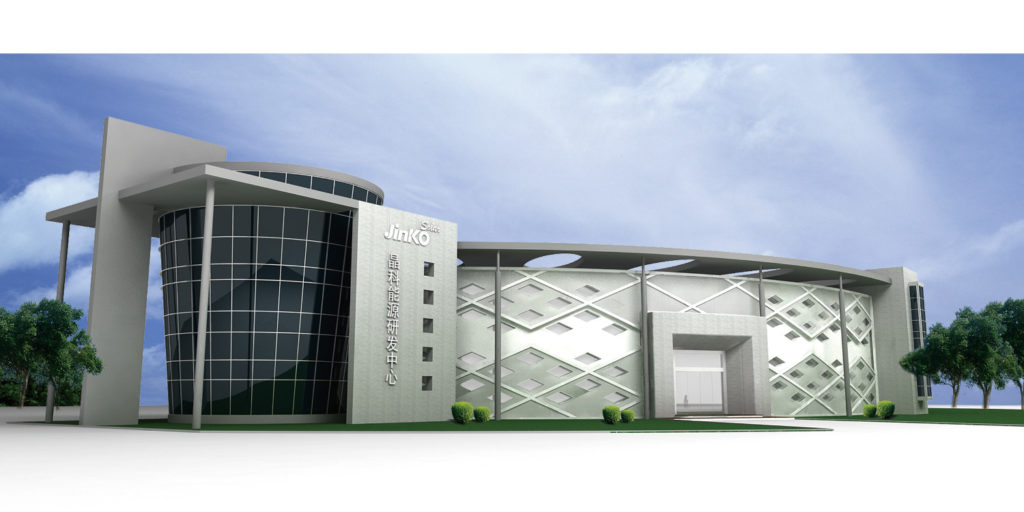From pv magazine USA.
Module factories don’t appear exciting from the outside and JinkoSolar’s new facility in Jacksonville, Florida is no exception. The featureless gray concrete building lies 14 miles from downtown Jacksonville in an industrial park surrounded by pines. It’s what’s on the inside that counts.
JinkoSolar has begun producing mono-PERC modules at the Jacksonville factory – which at 400 MW of annual production is the third-largest U.S. module fab by capacity behind Tesla’s Buffalo gigafactory and First Solar’s Perryburg facility. Jacksonville is also the first in a wave of new factories which were announced following President Trump’s imposition of global tariffs under Section 201 and a tax reform process driven by the Republican party. All told, pv magazine has confirmed four new factories are under construction or have come online, with a combined capacity of 3.8 GW.
Jinko yesterday held a ribbon cutting ceremony with state and local officials at the factory, which the Chinese manufacturer said produced its first module in November and which is expected to be fully ramped in a couple of months. It is at the ceremony that pv magazine got to peek behind the curtain.
Novel designs
The factory is making 72-cell modules and Jinko says it will soon begin making 60-cell products too. The Jacksonville output will feature five-busbar mono-PERC cells from JinkoSolar’s Malaysia factory, based on 158.75 mm wafers. That is slightly larger than the typical size but the most novel aspect of them is that they are fully square.
JinkoSolar declined to comment on whether the wafers are sliced from standard monocrystalline ingots using the Czochralski (Cz) process, or from ingots cast in a “mono-like” process in DSS (directional solidification) furnaces originally intended and used for multi-crystalline wafers.
The square shape suggests the latter. The Cz process results in round ingots, and a fully square shape would mean more waste to be re-melted for other ingots than the semi-square shape standard for mono.
Either way, the square cells mean JinkoSolar can squeeze out 5-10 W due to the increased cell surface area, and the company said its 72-cell mono-PERC modules are achieving power ratings as high as 400 W.
In a few months, Jinko plans to begin making modules using half-cut cells at the factory. “The half-cut module will be the workhorse product here,” said Nigel Cockroft, general manager of JinkoSolar’s U.S. subsidiary.
A win for Florida
The factory employs 200 workers in two shifts and around 600-700 workers have been involved in construction and operations. Local officials say the factory’s contribution to economic diversification in the region means its benefits go well beyond direct job creation. “Today’s ceremony is about the creation of good-paying, stable employment in a growing industry,” said Florida secretary of commerce Jamal Sowell. “Florida has long been a destination for tourism, but now also for technology.”
Jacksonville, with its nearby port and rail infrastructure, was identified as a strategic location as it is also near the service area of utility Florida Power & Light (FPL), which serves customers directly outside the city. FPL has built large solar plants and plans to deploy 30 million solar panels by 2030 – roughly 10 GW of capacity.
A portion of Jinko’s output is going to FPL and Cockroft referred to “our good friends at FPL”, who were in attendance at the opening ceremony. JinkoSolar also holds a 2.75 GW contract with FPL parent NextEra – the largest PV module contract in the United States seen by pv magazine.
Technology advancing
JinkoSolar touts the Jacksonville factory as its most advanced and revealed it is the most highly automated in its estate; even the junction boxes are attached by robots. The interior also illustrates the rise of Chinese toolmakers, with labels from Chinese manufacturers on many products and little evidence of overseas brands.
The facility is also set to harness artificial intelligence, beginning with electroluminescence inspections, although that functionality is not up and running yet.
For a long time JinkoSolar was known as a low-cost leader among the large Chinese PV makers but now the company appears to be pursuing a different approach. Jinko is transitioning its entire monocrystalline silicon cell production to passivated emitter rear cell (PERC) technology, and is looking at bifacial products as well as half-cut designs.
“Innovation in technology is playing more and more of an important role in the industry,” said Charlie Cao, Jinko’s chief financial officer. “It’s not all about cutting costs.”
All module makers with U.S. factories, as well as their products and capacities, can now be seen in pv magazine USA’s new module maker directory.
This content is protected by copyright and may not be reused. If you want to cooperate with us and would like to reuse some of our content, please contact: editors@pv-magazine.com.



2 comments
By submitting this form you agree to pv magazine using your data for the purposes of publishing your comment.
Your personal data will only be disclosed or otherwise transmitted to third parties for the purposes of spam filtering or if this is necessary for technical maintenance of the website. Any other transfer to third parties will not take place unless this is justified on the basis of applicable data protection regulations or if pv magazine is legally obliged to do so.
You may revoke this consent at any time with effect for the future, in which case your personal data will be deleted immediately. Otherwise, your data will be deleted if pv magazine has processed your request or the purpose of data storage is fulfilled.
Further information on data privacy can be found in our Data Protection Policy.